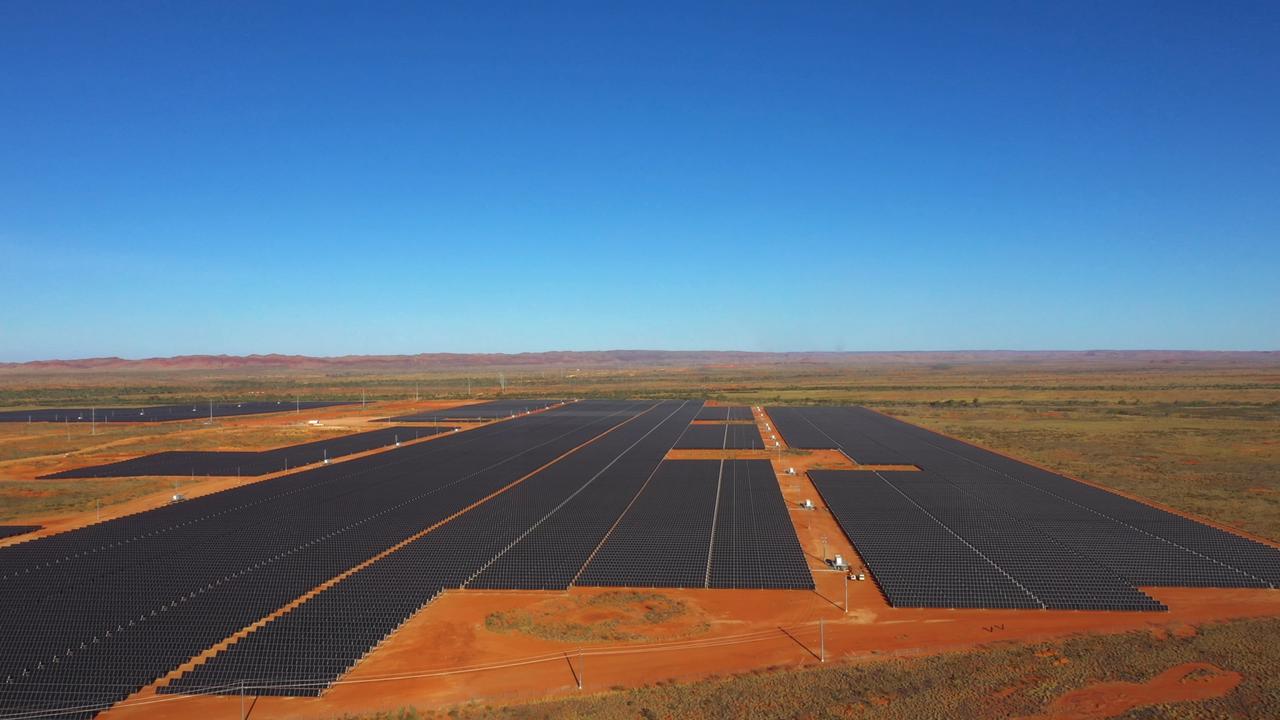SunCable moves to secure Indigenous agreements after federal green tick
The Mike Cannon-Brookes-led mega renewable energy project is now prioritising land agreements as it accelerates the development of what could be the world’s largest solar project.

SunCable, owned by billionaire Mike Cannon-Brookes, will spend the next two years prioritising agreements with Indigenous land owners as it moves to accelerate development of the world’s largest solar farm.
The project is one of the world’s most ambitious renewable energy projects, which, should it come to fruition, will deliver cheap energy to the NT and potentially Singapore.
SunCable on Tuesday secured approvals from the federal environment minister Tanya Plibersek, albeit with strict conditions to protect nature including requirements to “completely avoid important species” such as the greater bilby and critical habitat.
The 12,000-hectare solar farm project is on a pastoral station between Elliott and Tennant Creek.
Environmental approvals include an 800km transmission line to Darwin and an underwater cable to the end of Australian waters.
Cameron Garnsworthy, managing director of SunCable Australia, said the approvals were a critical step, but there remained plenty of work to do before construction was scheduled.
“The announcement paves the way for the next steps. We will now work through to secure Indigenous agreements and work through the possible inclusion of wind to supplement the solar and batteries,” Mr Garnsworthy told The Australian.
Mr Garnsworthy said the exact composition of the development was still being worked through. The addition of wind generation, which Mr Garnsworthy said is a more plentiful energy source during the evening, would reduce the cost of the energy by reducing the need for as much storage. However, with costs of solar, wind turbines and batteries rapidly decreasing, it was not currently possible to determine the exact size of the solar farm and batteries needed.

Whatever the composition, SunCable shapes as the world’s largest solar farm and a defining moment for Mr Cannon-Brookes, who has taken a prominent role in Australia’s energy transition through his advocacy stake in AGL Energy and clean-energy investments via private investment company Grok.
A final investment decision is planned for 2027 and a financial close due in 2028. Should it proceed, construction would begin later this decade for first power in the 2030s.
In its first iteration, SunCable has plans to deliver 900MW of green power to industrial customers in Darwin. The project also aims to supply 1.75GW of electricity to Singapore by an undersea cable stretching more than 4000km.
SunCable is still awaiting an answer from Singapore on its application for a licence to export clean energy to the country. Critics insist the 4200km cable is unviable and exposes Singapore to sovereign risk.
The planned link to Singapore would be more than five times bigger than the longest proposed submarine link in the world — the 767km Viking link between the UK and Denmark — testing engineering capabilities, while its route near Indonesian territorial waters risks it being potentially uprooted by geopolitical tensions.
Mr Cannon-Brookes insists the project is attractive, and has moved to scope potential domestic manufacturing capacity for the undersea cable.
The size of the project will produce plentiful electricity but could struggle to find enough demand if it cannot export it.
The NT is not connected to the wider National Electricity Market so the energy generated would be redundant for Australia’s market.
The NT government is looking to develop a Darwin-based hub for manufacturing and hydrogen production and SunCable could be a viable source of power, though plans for the so-called Middle Arm Sustainable Development Precinct are at a nascent stage.






To join the conversation, please log in. Don't have an account? Register
Join the conversation, you are commenting as Logout